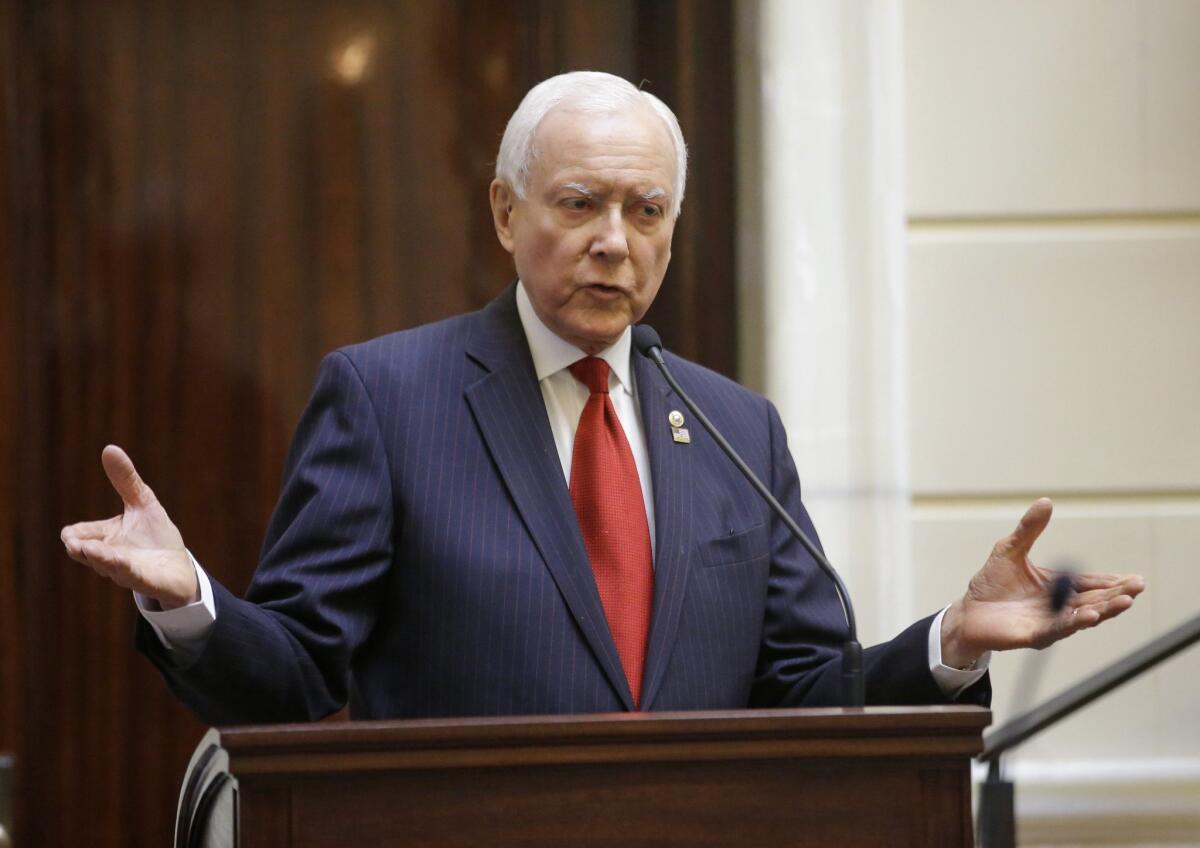Will Congress play politics by killing healthcare for 2 million children?

In the fetid swamp that is America’s healthcare coverage system, there has been one consistent ray of light: medical coverage for children.
Credit for that belongs to the federal Children’s Health Insurance Program, or CHIP, which was established in 1997 as an add-on to Medicaid with special rules and funding. Since its enactment, the uninsured rate for children under 18 has been cut in half, from 14% in 1997 to 7% in 2012. (See graphic.)
Now that progress is under threat. CHIP funding is scheduled to expire on Sept. 30. Congressional action is required to extend it. If your guess is that the Republican Congressional majority is plotting to cut the program back--if it extends funding at all--you guessed right.
Governors and their CHIP administrators are starting to panic, because the real deadline for Congressional action comes much sooner than Sept. 30. That’s because many states are crafting their budgets now for the coming fiscal year, and without assurances that CHIP funding will continue, the programs will have to be cut back or eliminated.
According to Jesse Cross-Call of the Center on Budget and Policy Priorities, 20 states must enact budgets for fiscal 2016 by May 1; in Virginia, the budget deadline has already passed. As the budget deadlines approach, Cross-Call observes, CHIP officials will have to make contingency plans for “moving enrollees out of state CHIP programs if federal funding runs out” or ending contracts with health plans providing CHIP coverage.
This isn’t a partisan issue, or shouldn’t be. Govs. Steve Beshear, D-Ky., and Bill Haslam, R-Tenn., chairs of the Health and Human Services Committee of the National Governors Assn., warned Congressional leaders last month that without prompt action, “more than two million children could lose access to the services they need to thrive and lead healthy, productive lives.”
Democrats have a straightforward solution: continue CHIP funding for another four years, as measures introduced by Sen. Sherrod Brown, D-Ohio, and Rep. Gene Greene, D-Texas, would do. President Obama’s 2016 budget proposal would do the same.
Republicans are balking. A draft proposal by Senate Finance Committee Chairman Orrin Hatch, R-Utah, and House Energy and Commerce Committee Chairman Fred Upton, R-Mich., would put millions of children at “very serious risk” of becoming uninsured, according to Joan Alker of Georgetown University’s Center for Children and Families.
Here are some of the ways the Hatch-Upton plan unwinds the achievements of the last 18 years in child health.
First, it knocks children in families with incomes above 300% of the federal poverty line out of CHIP entirely. (For a family with two kids, that’s $72,750.) The change would force a cutback in 18 states and the District of Columbia that cover children to that level.
The measure also would reduce CHIP funding for children in families earning 250-300% of the poverty line. In the 27 states and DC that cover those children (including California), the federal share of CHIP funding would drop from the 70% of all CHIP costs now covered by the feds to the Medicaid standard of 57%. By raising the cost of CHIP for state budgets, the change obviously would prompt some of them to throw those kids off. “When states have the option to limit eligibility for kids,” Alker writes, “history shows some of them will take it.”
Hatch and Upton would repeal a rule allowing states to streamline enrollments in CHIP by using eligibility determinations already made for other programs, such as food stamps. They would complicate enrollments by repealing provisions of the Affordable Care Act that made enrollments easier, that forbid states to reduce services provided under CHIP, and kept states from imposing waiting periods on enrollments.
Waiting periods have been abolished in 32 states and Washington, D.C., a step recommended by the Childrens Hospital Assn. and other advocates; the GOP proposal would allow states to impose waiting periods as long as one year. The toll of a one-year wait on, say, a 6-year-old child in need of care is incalculable; the purpose of imposing it, other than to save money at the child’s expense, is incomprehensible.
The sponsors’ defense of these unnecessary cutbacks are, as one would expect, nebulous and mealy-mouthed. Hatch in January called for extending CHIP funding “in a responsible way.” (In GOP-speak, that usually means “cheaper.”)
Upton praised his own draft for providing states with “considerable flexibility to design and manage their individual programs to best serve the citizens of the state.” Even a cursory glance at the U.S. map would show that many of the states with the worst child health statistics are also the ones with the most skinflint public healthcare programs. Upton’s words merely pose the question of which “citizens” are served by cutting child health spending.
This sort of rhetoric suggests that children’s health is about to join disability funding as a football in Washington’s partisan political game. As usual, it’s the most vulnerable Americans who are about to get kicked around.
Keep up to date with the Economy Hub. Follow @hiltzikm on Twitter, see our Facebook page, or email mhiltzik@latimes.com.
More to Read
Inside the business of entertainment
The Wide Shot brings you news, analysis and insights on everything from streaming wars to production — and what it all means for the future.
You may occasionally receive promotional content from the Los Angeles Times.











